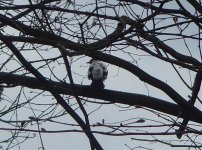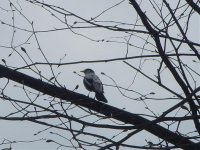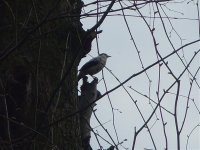This afternoon I gazed out of my lounge window and noticed a male Blackbird on the lawn. As it hopped around I noticed that the tail was unusual, in that the outer tail feather on either side was totally White. this is the first time i,ve seen this on any black bird other than Crows,Jackdaws & Rooks. Have any of you members ever seen this. Could this be due to the food that is now being eaten, that we tend to throw out instead of being reliant on finding natural food. Roly(Bellow)|:S|
-
Welcome to BirdForum, the internet's largest birding community with thousands of members from all over the world. The forums are dedicated to wild birds, birding, binoculars and equipment and all that goes with it.
Please register for an account to take part in the discussions in the forum, post your pictures in the gallery and more.
Blackbird colour change. (1 Viewer)
- Thread starter bellow
- Start date






